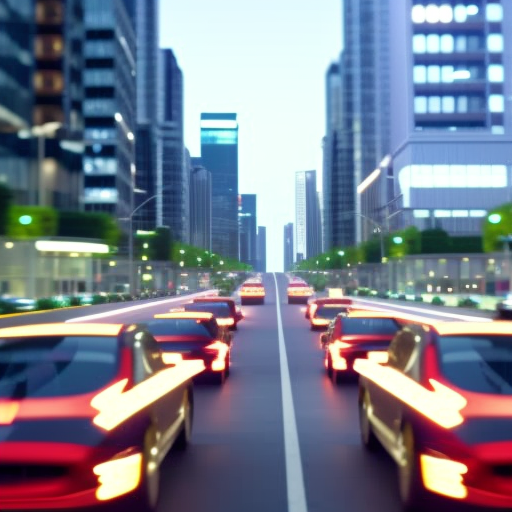Summary:
Smart transportation systems are revolutionizing the way people and goods move around cities. These systems leverage advanced technologies such as Internet of Things (IoT), artificial intelligence (AI), and big data analytics to improve the efficiency, safety, and sustainability of transportation networks. By integrating various modes of transportation, optimizing traffic flow, and providing real-time information to users, smart transportation systems are transforming urban mobility.
Integration of Transportation Modes:
One of the key features of smart transportation systems is the integration of different modes of transportation, including public transit, ride-sharing services, and bike-sharing programs. This integration allows users to plan and pay for their entire journey using a single platform or app. For example, commuters can use a smartphone app to plan a trip that combines a bus ride, a bike-sharing service, and a short walk, all seamlessly coordinated to minimize travel time and maximize convenience.
Traffic Optimization:
Smart transportation systems use real-time data and AI algorithms to optimize traffic flow and reduce congestion. By collecting data from various sources, such as sensors, cameras, and GPS devices, these systems can analyze traffic patterns and make intelligent decisions to improve the efficiency of transportation networks. For instance, traffic signals can be dynamically adjusted based on real-time traffic conditions to reduce waiting times and improve the overall flow of vehicles.
Real-Time Information:
Smart transportation systems provide users with real-time information about traffic conditions, public transit schedules, and alternative routes. This information is delivered through mobile apps, electronic signage, and other communication channels, allowing users to make informed decisions about their travel plans. For example, commuters can receive alerts about delays or disruptions in public transit services and choose alternative routes or modes of transportation to avoid inconvenience.
Enhanced Safety:
By leveraging IoT technologies, smart transportation systems can enhance safety on the roads. For instance, connected vehicles can communicate with each other and with infrastructure to exchange information about road conditions, traffic congestion, and potential hazards. This enables vehicles to take proactive measures, such as adjusting speed or changing lanes, to avoid accidents. Additionally, smart transportation systems can also provide real-time information to emergency services, enabling faster response times in case of accidents or emergencies.
Sustainability:
Smart transportation systems play a crucial role in promoting sustainable mobility. By encouraging the use of public transit, ride-sharing services, and non-motorized modes of transportation, these systems help reduce traffic congestion, air pollution, and greenhouse gas emissions. Moreover, by optimizing traffic flow and reducing idling times, smart transportation systems contribute to fuel efficiency and energy conservation.
Challenges and Future Outlook:
Despite their numerous benefits, smart transportation systems face challenges such as data privacy concerns, cybersecurity risks, and the need for infrastructure upgrades. However, ongoing advancements in technology and increased investments in smart city initiatives are expected to overcome these challenges. In the future, smart transportation systems are likely to become more integrated, autonomous, and sustainable, with the potential for self-driving vehicles, predictive analytics, and even flying taxis becoming a reality.
In conclusion, smart transportation systems are transforming urban mobility by integrating various modes of transportation, optimizing traffic flow, and providing real-time information to users. These systems improve efficiency, safety, and sustainability, making cities more livable and accessible. With ongoing advancements in technology, the future of smart transportation looks promising, with the potential for even more innovative and sustainable solutions.












